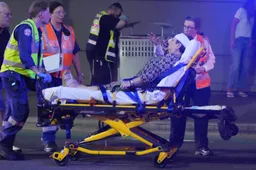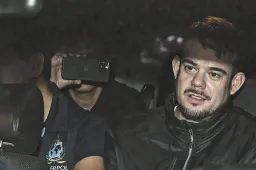
We zouden hem bijna vergeten, maar een tijdje geleden was de voornaamste terreurleider Osama bin Laden. The New Yorker heeft alle beschikbare researchkwaliteit gestopt in een reconstructie van de actie op 2 mei in het gehucht Abbottabad, die ook als je de afloop kent heel spannend is om te lezen. En die ook nieuwe details bevat. Bijvoorbeeld waar Obama en de zijne nou precies naar zaten te kijken, en waarom dat in zo'n krap kamertje was, hoe de plaatselijke autoriteiten op een dwaalspoor werden gebracht, de taak van de hond. En ook, shot voor shot, kamer voor kamer, de actie zelf. Een journalistiek meesterwerkje.
Shortly after eleven o’clock on the night of May 1st, two MH-60 Black Hawk helicopters lifted off from Jalalabad Air Field, in eastern Afghanistan, and embarked on a covert mission into Pakistan to kill Osama bin Laden. Inside the aircraft were twenty-three Navy SEALs from Team Six, which is officially known as the Naval Special Warfare Development Group, or DEVGRU. A Pakistani-American translator, whom I will call Ahmed, and a dog named Cairo—a Belgian Malinois—were also aboard. It was a moonless evening, and the helicopters’ pilots, wearing night-vision goggles, flew without lights over mountains that straddle the border with Pakistan. Radio communications were kept to a minimum, and an eerie calm settled inside the aircraft.
Fifteen minutes later, the helicopters ducked into an alpine valley and slipped, undetected, into Pakistani airspace. For more than sixty years, Pakistan’s military has maintained a state of high alert against its eastern neighbor, India. Because of this obsession, Pakistan’s “principal air defenses are all pointing east,” Shuja Nawaz, an expert on the Pakistani Army and the author of “Crossed Swords: Pakistan, Its Army, and the Wars Within,” told me. Senior defense and Administration officials concur with this assessment, but a Pakistani senior military official, whom I reached at his office, in Rawalpindi, disagreed. “No one leaves their borders unattended,” he said. Though he declined to elaborate on the location or orientation of Pakistan’s radars—“It’s not where the radars are or aren’t”—he said that the American infiltration was the result of “technological gaps we have vis-à-vis the U.S.” The Black Hawks, each of which had two pilots and a crewman from the 160th Special Operations Aviation Regiment, or the Night Stalkers, had been modified to mask heat, noise, and movement; the copters’ exteriors had sharp, flat angles and were covered with radar-dampening “skin.”
The SEALs’ destination was a house in the small city of Abbottabad, which is about a hundred and twenty miles across the Pakistan border. Situated north of Islamabad, Pakistan’s capital, Abbottabad is in the foothills of the Pir Panjal Range, and is popular in the summertime with families seeking relief from the blistering heat farther south. Founded in 1853 by a British major named James Abbott, the city became the home of a prestigious military academy after the creation of Pakistan, in 1947. According to information gathered by the Central Intelligence Agency, bin Laden was holed up on the third floor of a house in a one-acre compound just off Kakul Road in Bilal Town, a middle-class neighborhood less than a mile from the entrance to the academy. If all went according to plan, the SEALs would drop from the helicopters into the compound, overpower bin Laden’s guards, shoot and kill him at close range, and then take the corpse back to Afghanistan.
The helicopters traversed Mohmand, one of Pakistan’s seven tribal areas, skirted the north of Peshawar, and continued due east. The commander of DEVGRU’s Red Squadron, whom I will call James, sat on the floor, squeezed among ten other SEALs, Ahmed, and Cairo. (The names of all the covert operators mentioned in this story have been changed.) James, a broad-chested man in his late thirties, does not have the lithe swimmer’s frame that one might expect of a SEAL—he is built more like a discus thrower. That night, he wore a shirt and trousers in Desert Digital Camouflage, and carried a silenced Sig Sauer P226 pistol, along with extra ammunition; a CamelBak, for hydration; and gel shots, for endurance. He held a short-barrel, silenced M4 rifle. (Others SEALs had chosen the Heckler & Koch MP7.) A “blowout kit,” for treating field trauma, was tucked into the small of James’s back. Stuffed into one of his pockets was a laminated gridded map of the compound. In another pocket was a booklet with photographs and physical descriptions of the people suspected of being inside. He wore a noise-cancelling headset, which blocked out nearly everything besides his heartbeat.
Bron(nen): The New Yorker
POPULAIR NIEUWS

Nederland overspoeld met gevaarlijke elektronica en gadgets: "Binnen tien seconden liggen al je wachtwoorden op tafel"

Slecht nieuws voor mandarijn-eters: dit is pas een échte portie fruit

Zien: Held grijpt schutter bij Bondi Beach, ‘gewone Australiër’ redt levens tijdens terreuraanslag

Joran van der Sloot probeerde zichzelf op te hangen in de cel

Typefoutje? Lelystedeling koopt 'per ongeluk' Hoofddorps Spookhotel voor 23 miljoen

Waarom je blij mag zijn dat je de jongste bent thuis
Loading
